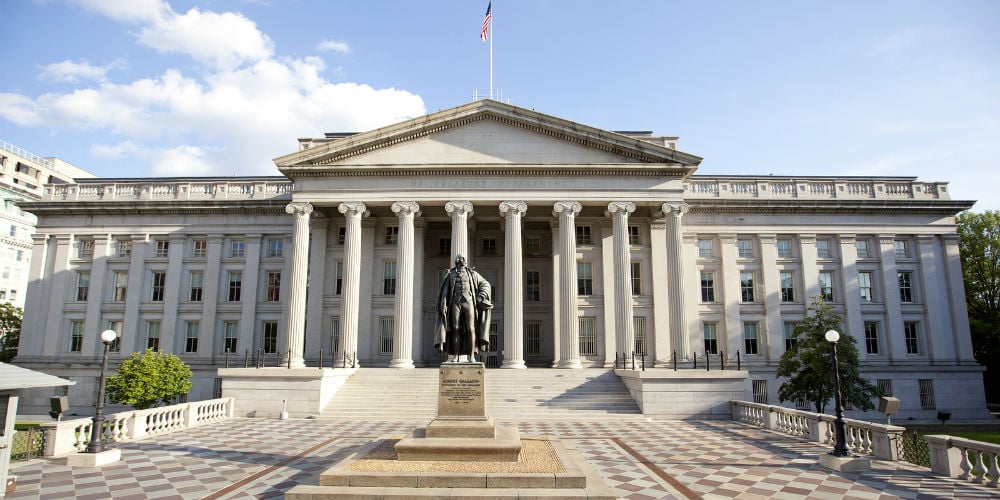The future of the CDFI program
Where things stand and where they might be headed for CDFI Certification, and what it could mean for your credit union.

Some people might say that the Community Development Financial Institutions program is in a state of transition.
Others might call it turmoil.
Or even confusion.
The Treasury Department is overhauling the entire program—from application to certification. At the same time, the CDFI Fund continues to process applications and is attempting to work with financial institutions to “cure” any issues those applications may present.
And, before a “blackout” period went into effect on Oct. 1, credit union trade groups and House members complained that the fund had a huge backlog of applications.
What Is the Reason for the Changes?
On Oct. 4, fund officials previewed the proposed changes to the application and certification process. They said they intend to complete the overhaul by April 2023, when applications would once again be accepted.
“This review and update is designed to ensure CDFI Certification practices reflect and represent the evolving nature of CDFIs; safeguard government resources; and continue to accurately verify an organization’s commitment to a community development mission,” Fund officials said.
They added that the revamped process would set high standards for mission, responsible products and services, accountability, conduct and performance, noting, “These are absolute and universal principles of CDFI Certification that should carry more credence during these challenging times, when so much needs to be done to facilitate economic opportunity in distressed and underserved communities.”
Stricter Regulations Anticipated
In a potentially ominous signal, Treasury officials warned that the new application process may require some CDFIs to change the way they do business. And, further, some financial institutions may not even qualify under the new regulatory regime.
In their preview, officials revealed the new application will include “bright-line questions” about a financial institution’s lending practices, and that if such practices or products are harmful to low-income and underserved communities, the proposed CDFI application would be rejected.
It was additionally noted that any applicant offering in excess of a 36% interest rate and unable to demonstrate that they meet consumer protection standards, would likewise be rejected.
That should not pose a huge hurdle for credit unions, since the NCUA has set an 18% interest rate ceiling for most loans, and a 28% ceiling for loans using the Payday Alternative Loan Program model.
Reporting Requirements and Advisory Boards
The proposed application would measure an institution’s target financing over the most recently completed fiscal year. However, it no longer would require that the applicant also provide data on its year-to-date activity.
The requirement that applicants meet financial product thresholds in both the number and dollar amount of that activity would be retained.
Further, recognizing that some financial institutions have unique board-related challenges, Fund officials explained the new application would allow banks and credit unions to create their own advisory boards.
New Target Market Methodologies
The revised application would additionally expand opportunities for a financial institution to receive Target Market credit and allow certified CDFIs to meet the thresholds based on a three-year rolling average.
Shortly after outlining the changes, the CDFI released for public comment a plan to issue pre-approved Target Market assessment methodologies that applicants could use to assess whether consumers and businesses are members of a pre-approved Target Market.
Under the current application process, applicants must describe and seek approval for each assessment methodology they use. The revision would allow applicants to select from a drop-down menu the options in the list they used for each of their Target Market components.
Concerns From Congress
As the Fund was outlining the proposed changes to the CDFI Certification process, a bipartisan group of House members sent Director Jodie Harris a letter asking both why the current application process takes so long and why the Treasury Department is overhauling the process.
The politicians said they are hearing that some financial institutions are waiting for more than 12 months for certification approval and that some CDFIs are losing their certifications without having the opportunity to “cure” the issues.
And, echoing complaints from credit union trade groups, the lawmakers added they are worried about a lack of communication from the CDFI Fund on concerns over the program.
They specifically asked Harris for information about the application backlog and how fund officials are dealing with the problem, in addition to requesting information about the decertification process and whether the agency provides a way for financial institutions to become re-certified.
Meanwhile, even as they were preparing for the blackout period, the Treasury Department announced that CDFIs with either pending Annual Certification and Data Collection Reports or pending cure requirements will continue to be considered as CDFIs until they are otherwise notified.
The program has now entered the blackout period.
Takeaway
As difficult and frustrating as it can be at times to keep track of all the proposed updates to the CDFI Certification process, it is also vital for credit unions to anticipate and be prepared for the coming changes, no matter their ultimate form. Of particular consequence is the hinted-at possibility an institution may have to alter the fundamental way it conducts business in order to be eligible and, indeed, that some current CDFIs may no longer qualify for the distinction.
To offset these concerns, both certified and prospective CDFI credit unions should remain as vigilant as possible by analyzing and understanding exactly where they stand under the current requirements. This insight could be crucial in terms of positioning an institution to adapt and act as quickly and effectively as possible when the updates are officially announced.
Finally, credit unions should likewise be aware of what other, similar options may be available to them—such as attaining a Low-Income Designation through the NCUA—in the event they no longer meet the new CDFI Certification threshold.
As they say, stay tuned…

